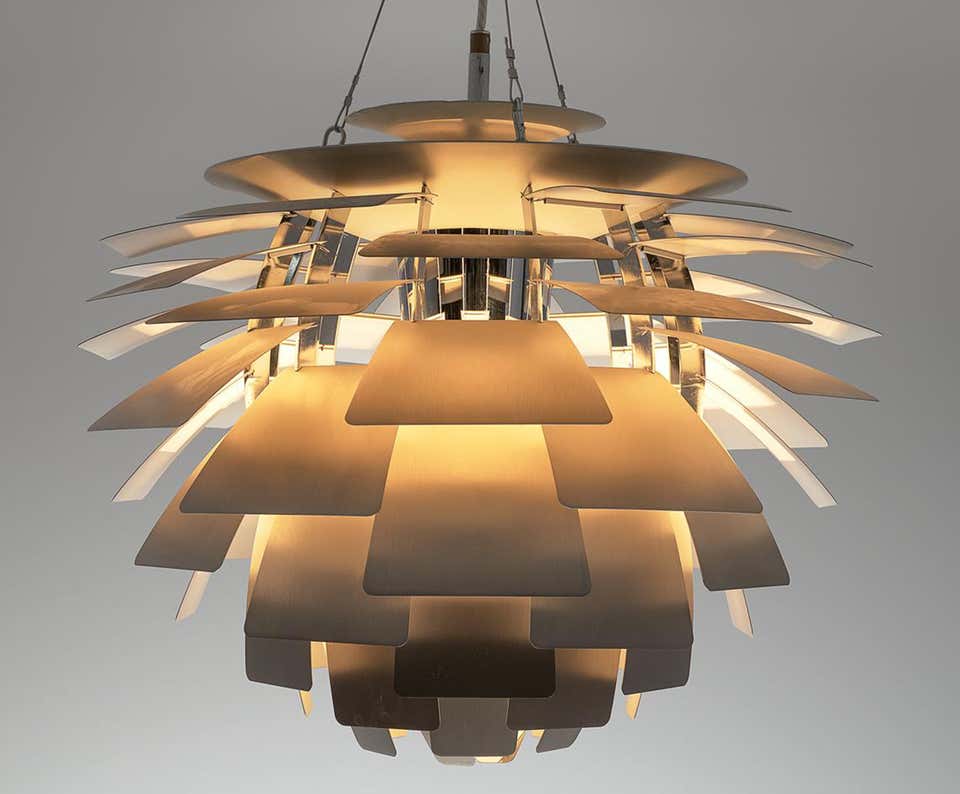Iconic Designs
Artichoke Lamp
By Poul Henningsen
The PH Artichoke lamp was born out of a lighting commission Poul Henningsen (1894–1967) received from Danish architects Eva and Nils Koppel to outfit the newly rebuilt Langelinie Pavilion, a Copenhagen restaurant that was bombed during World War II by the Germans with support from Danish collaborators. The original space — situated on the Copenhagen waterfront — dated back to 1902 and was a beloved spot for socializing in the city. The new, modernist 11-story pavilion was completed by the Koppels in 1958.
The objective for Henningsen, a Danish architect, designer and author, was to create a light that was beautiful, whether it was on or off. To do so, he returned to a piece he had tinkered with three decades earlier: the PH Septima, a pendant fixture with seven light shades. He updated his old design for the Koppels by paying homage to the humble, edible globe artichoke.
Henningsen devised 72 copper “leaves” that he staggered in rows to completely hide the light bulb inside and prevent any harsh glare from materializing. Each of the 12 rows would have six leaves. The genius of the Artichoke lamp lay in Henningsen’s choice to marry design with material. He was drawn to the gas lamps that illuminated his Danish hometown as a child and yearned to re-create the warmth that we attribute to gas lighting. The Artichoke lamp’s decorative arrangement of bent sheet copper emits a similarly radiant hue when lit from within, lending a healthy glow to the guests in the room. It took Henningsen only three months to finish the design upon receiving the commission.
The initial version of the Artichoke lamp was manufactured by Danish lighting company Louis Poulsen, with which Henningsen began working in 1925. When the fixture was ultimately hung in the Langelinie Pavilion, it was so heavy that it required suspension from steel aircraft cables.
The widely popular Artichoke lamp embodies Henningsen’s core beliefs about lighting. “This lamp is constructed with the most difficult and noble task in mind: lighting in the home,” he said. “The aim is to beautify the home and those who live there.”
This mantra rang true throughout Henningsen’s career, as it also helps define other signature pieces of his, such as the PH5 pendant lamp, PH table lamp and more. Henningsen’s original PH lamp design won first prize for modern lighting at the International Exposition of Decorative Arts in Paris in 1925.
Louis Poulsen continues to produce Henningsen’s floor lamps, sconces and more, and the Artichoke lamp is still available in its original copper as well as other assorted materials.
